Plugging In
Embarking on a camping adventure doesn’t mean leaving behind the comforts of home. With the right 12-volt appliances, you can enjoy modern conveniences while immersing yourself in nature.
Jolted Gems
- 12V appliances run directly on DC for high efficiency.
- They are perfect for off-grid, RV, and camping setups.
- Categories include cooking, cooling, heating, and others.
- Selection depends on power draw, battery capacity, and build quality.
- Proper wiring and mounting maximize safety and performance.
- Effective battery and solar management sustain long-term use.
- BougeRV 12V Portable Car Fridge is the somethin you must have.
Best 12 Volt Appliances for Camping!
Clicking on Product Name Redirects to Amazon. Clicking on “Check More Details” Redirects to that Product’s Section Within the Article.
Name | Details | Best for | Voltage | Weight |
|---|---|---|---|---|
Best 12-Volt Fridge | 12/24 V DC or 110–240 V AC | 32.7 lbs (14.8 kg) | ||
Best 12-Volt Compressor | 12 V DC | ~16 lbs (7.3 kg) | ||
Best 12-Volt Water Pump | 12 V DC | ~4.2 lbs (1.9 kg) | ||
Best Power Station for Powering 12-Volt Appliances | 12 V DC (Provides) | 17 lbs (7.7 kg) | ||
Best Solar Charger for 12-Volt Appliances | 19 V (Provides) | ~16.5 lbs (7.4 kg) |
1. BougeRV 12-Volt Fridge
Buy If:
- You frequently camp or travel off-grid and need reliable, 12V cooling.
- You require both fridge and freezer functions for diverse food storage.
- You use battery or solar power and value energy-efficient operation.
- You have enough space in your vehicle for a mid-sized cooling unit.
Don't Buy If:
- You have very limited space or a compact vehicle for bulky appliances.
- You need ultra-precise temperature control for delicate items.
- You prefer completely silent operation with no compressor noise.
- You require independent dual-zone controls for fridge and freezer settings.
Key Features
- Capacity (42 Quart): Provides ample storage space for extended trips and group camping.
- Dual Functionality: Can function as a freezer, set as low as -4°F (-20°C) and a fridge compartment that can go as far as 50°F (10°C), allowing separate storage of frozen and chilled items.
- 12V/24V DC & 110V~240V AC Power Input: Operates from vehicle batteries or home outlets, offering versatility for off-grid camping.
- Low Power Consumption (~45W): Optimized for battery efficiency, extending run-time during remote adventures.
- Digital Temperature Control: Adjustable settings from -4°F to 50°F (-20°C to 10°C), ensuring practical food preservation in varying conditions.
Goods & Bads
Positives:
- Efficient Cooling: Quickly reaches and maintains set temperatures to keep food fresh throughout multi-day trips.
- Low Power Consumption: Uses minimal energy, preserving battery life when camping off-grid or on solar power.
- Quiet Operation: Runs relatively silent so you can enjoy peaceful nights without disturbing sleep.
- Dual Functionality: Works as a freezer and a fridge, making it easier to cool or freeze you desired food.
- Versatile Power Options: Supports both 12V DC and 110V~240V AC inputs, ensuring flexibility in various camping setups.
Negatives:
- Temperature Variability: Inaccurate readings and fluctuations can lead to food spoilage if not monitored closely.
- Bulk and Weight: Its size and heaviness may be challenging to transport in smaller vehicles or tight spaces.
- Overly Sensitive Controls: Digital adjustments can be finicky, sometimes causing unintended temperature shifts.
- Limited Insulation: May lose cold quickly when unplugged, which can compromise food safety during extended stops.
- Ergonomic Shortcomings: Some design elements, like stiff handles, can make frequent access cumbersome on rugged trips.
What Other People Said?
Unfortunately, we couldn’t find any valuable reviews other than those on E-commerce websites. Perhaps you should check Amazon Reviews.
Our Take
The BougeRV 12V portable fridge/freezer is 42 quarts in size, featuring a dual-functionality, working as a freezer to freeze stuff or as a refrigerator to chill things up a bit.
It supports both 12V DC and 110V~240V AC power inputs with low power consumption (~45W), making it well-suited for off-grid use with batteries or solar panels.
Its digital temperature control, despite some fluctuations, and quiet operation ensure that food and beverages remain safe and undisturbed throughout your camping adventures.
This unit is ideal for campers with ample space and robust power setups—such as truckers and RV users—who need reliable cooling for extended trips.
While its size and occasional temperature variability may not suit compact setups or users requiring pinpoint precision, its overall performance and value make it a strong contender for off-grid and long-haul camping scenarios.
Addressing Your Concerns
How consistent is the temperature control during long trips?
Temperature settings may fluctuate, so monitoring and occasional adjustments are recommended to keep food safe.
Are the digital controls easy to use while camping?
Some users report unresponsive touchscreens and buttons, so it’s wise to get familiar with the controls before your trip.
How does the unit’s power draw affect off-grid camping?
With a consumption of ~45W, it’s efficient for many setups but may require a robust battery or solar system for extended use.
Will the unit fit in smaller vehicles or compact camping setups?
Its bulk and weight are better suited to larger vehicles like RVs or trucks, so check your available space prior to purchase.
Does the product maintain its temperature when unplugged?
Insulation is moderate, meaning the temperature may rise quickly when off power, potentially impacting food preservation during long stops.
2. ALL-TOP Air Compressor Kit
Buy If:
- You need fast inflation for off-road tire recovery during camping trips.
- You frequently adventure off-road and require a durable, heavy-duty compressor.
- You have ample vehicle storage and weight capacity for a robust tool.
- You plan to use it with multiple air tools and adapters on various tires.
Don't Buy If:
- You have very limited storage space or need a lightweight device.
- You require a compressor with precise, easy-to-read pressure control on the fly.
- You use 12V appliances only for infrequent, light-duty inflation tasks.
Key Features
- Maximum Pressure (150 PSI): Delivers high pressure needed for inflating off-road tires or air mattresses efficiently during camping trips.
- Airflow Rate (200 L/Min): Provides fast inflation to get you back on the trail quickly, saving valuable time on camp preparations.
- 12V DC Power Operation: Easily plugs into your vehicle’s battery, ideal for camping where standard power outlets are unavailable.
- Heavy-Duty Construction: Built with robust materials for long-lasting use in rugged outdoor conditions, ensuring reliability on remote trips.
- Portable Design: Compact enough to fit in your vehicle storage while offering high performance, perfect for camping where space is limited.
- Multiple Fittings/Adapters Included: Allows compatibility with various tire valves and air tools, giving flexibility for different camping needs.
Goods & Bads
Positives:
- Rapid inflation: Quickly brings tires or inflatables to pressure, cutting down on wait time and letting you focus on camp activities.
- High-pressure output: With a 150 PSI limit, it supports a range of applications from off-road tires to inflating camping gear reliably.
- Durable build: Its rugged construction withstands bumpy roads and harsh weather, ensuring consistent performance on extended trips.
- 12V power compatibility: Operates directly off your vehicle’s battery, which is practical when you’re away from standard power sources.
- Versatile adapters: The included fittings adapt to different valve types, adding convenience when dealing with varied camping equipment.
Negatives:
- Heat generation: Extended use can cause the unit and hose to get very hot, increasing the risk of burns and slowing operations during peak usage.
- Bulky design: Its heavier, larger build may be cumbersome if you need to pack light or transport it separately from your vehicle.
- Gauge issues: The pressure gauge is not accurate, making it harder to monitor inflation accurately.
- Falling bits: Although the overall design is rugged, there are some plastic parts which may eventually break off if not handled carefully.
What Other People Said?
Unfortunately, we couldn’t find any valuable reviews other than those on E-commerce websites. Perhaps you should check Amazon Reviews.
Our Take
The All Top 12V Air Compressor delivers up to 150 PSI and 200 L/min airflow, ensuring rapid inflation of off-road tires, RV tires, and camping inflatables even in remote settings.
Its 12V DC operation allows direct connection to your vehicle’s battery, making it ideal for off-grid use.
The unit’s heavy-duty construction promises durability on rugged terrain, though some plastic parts and its bulky design can become a deal breaker.
If you’re an off-road enthusiast or RV camper who values fast, dependable inflation from your vehicle battery, this compressor offers excellent value for its price.
Its robust performance under challenging conditions makes it the best 12-volt option for campers who need a reliable compressor for off-grid adventures.
Addressing Your Concerns
Will the compressor get too hot during extended use?
Yes, extended operation can lead to significant heat buildup in both the unit and hose, so users should allow cooling periods to prevent burns and maintain performance during long camping sessions.
Is the compressor too heavy or bulky for camping storage?
The unit’s robust build contributes to a heavier and bulkier design, which might be challenging for those with limited storage space in smaller vehicles or backpacks.
Can I rely on the pressure gauge for accurate readings?
Some users have reported that the in-line gauge can be inaccurate, so it may be advisable to use a secondary, reliable gauge to ensure correct tire pressure when camping off-road.
Are the power cables long enough for all vehicle setups?
It comes with a 6.5ft (~2m) power cord which can be ideal for some scenarios, while falling short in others. So consider you use case to decide if the cord length is enough for you.
3. WASSERMANN RV Pump
Buy If:
- You need a reliable water pump for your RV or camping setup.
- You want automatic, self-priming operation for hassle-free use.
- You require consistent water pressure for showers, cleaning, or cooking.
- You have a 12V power source and value energy-efficient appliances.
Don't Buy If:
- You have very limited space and need ultra-compact gear.
- You rarely use a water system or have minimal water needs.
- You prefer manual controls over automatic functions.
Key Features
- 12V DC Operation: Runs on a standard 12V power supply, perfect for RV batteries and portable camping setups.
- Flow Rate – 4.0 GPM: Delivers 4.0 gallons (15.1 L) per minute, ensuring enough water for showering, cooking, and cleaning while camping.
- Pressure Rating – 45 PSI: Maintains a consistent 45 PSI water pressure, which supports reliable performance for various outdoor tasks.
- Self-Priming Design: Automatically primes itself without manual effort, saving time and simplifying setup in remote locations.
- Built-In Pressure Switch: Activates and deactivates the pump based on water demand, helping conserve battery power during camp use.
- Compact & Lightweight: Its small, portable design is ideal for limited space in RVs and other camping environments.
- Durable, Corrosion-Resistant Build: Engineered to withstand harsh outdoor conditions, ensuring long-term reliability on camping trips.
Goods & Bads
Positives:
- Consistent Water Pressure: Delivers 45 PSI, ensuring a reliable water flow for essential tasks like showering and cooking during camp.
- Self-Priming Function: Automatically primes without manual intervention, reducing setup time and effort in remote locations.
- Automatic Pressure Switch: Conserves battery power by activating only when water is needed, enhancing efficiency on long trips.
- 12V DC Compatibility: Easily integrates with RV batteries and portable power systems, making it ideal for off-grid camping.
- Durable Construction: Built with corrosion-resistant materials to withstand outdoor elements and extend the pump’s lifespan.
Negatives:
- Noise During Operation: Although relatively quiet, the pump may still produce noticeable sound, which could disrupt the atmosphere at your campsite.
- Moderate Flow Rate: With 4.0 GPM, it might not meet the needs of larger groups or high-demand water tasks.
- Plastic Components: Although durable, some of it’s parts are still made with plastic, raising concerns about durability under rough outdoor conditions.
- Sensitivity After Inactivity: Extended non-use could affect self-priming performance, potentially delaying water access on long trips.
What Other People Said?
Unfortunately, we couldn’t find any valuable reviews other than those on E-commerce websites. Perhaps you should check Amazon Reviews.
Our Take
The WASSERMANN Water Pressure Pump operates on a standard 12V DC system, delivering a steady 4.0 GPM at 45 PSI—ideal for handling daily tasks like showering, cooking, and cleaning in an RV or campsite.
Its self-priming design and integrated pressure switch enable automatic operation, which conserves battery power and simplifies setup.
The pump’s compact and lightweight construction makes it easy to install in confined spaces.
While its durable and corrosion-resistant, It’s plastic components can still be subject to damage.
This pump is best suited for RV travelers, weekend campers, and small group or solo adventurers who need a reliable, low-maintenance water solution.
It provides consistent performance at an attractive price point, making it a practical and efficient choice for moderate water demands in off-grid and on-road scenarios.
Addressing Your Concerns
How noisy is the pump during operation?
The pump produces a noticeable sound when running, which may be a concern in very quiet settings, but most users find it acceptable during daytime use; positioning it away from sleeping areas can help minimize disruption.
Is the 4.0 GPM flow rate sufficient for camping needs?
The 4.0 GPM output meets typical RV and small-group requirements for tasks like showering and cooking, though it might be marginal for larger groups or simultaneous use of multiple fixtures.
How durable is the pump under outdoor conditions?
The pump features lightweight plastic components with corrosion-resistant finishes, offering reliable performance in moderate outdoor conditions, but extreme or prolonged exposure may affect its longevity.
Can this pump be easily installed in various RV setups?
Its compact, lightweight design is generally compatible with most RV and camping configurations, though verifying available space and connection points before purchase is recommended.
Does the pump drain battery power when not actively in use?
The built-in pressure switch ensures the pump operates only when needed, reducing unnecessary power consumption, though users should still ensure their battery system can handle periodic cycling.
4. GRECELL PowerStation
Buy If:
- You need continuous power for essential 12V appliances while camping.
- You plan to use solar panels to keep your devices charged.
- You often camp in remote areas with unreliable grid power.
Don't Buy If:
- You have limited storage space for bulky equipment.
- You only require minimal power for occasional device charging.
Key Features
- High Capacity & Surge Power: 999Wh capacity with a 1000W continuous output and 2000W surge; ideal for powering essential camping devices like mini-fridges and CPAP machines.
- Lightweight & Compact: Weighs only 17 pounds (7.7 kg) and measures 11.6 x 7.9 x 7.9 inches (29.4 x 20 x 20 cm); perfect for easy transport and limited storage in campers.
- Multiple Output Ports: Includes 2 AC outlets, 1 USB-C PD 60W, 3 USB-A QC 18W, 1 wireless charger, 1 car port, and 2 DC outputs; supports powering up to 10 devices simultaneously during camping.
- Versatile Charging Options: Recharge via AC outlet, car charger, or solar panel with built-in MPPT controller; ensures reliable energy replenishment in remote outdoor settings.
- Advanced Battery Management: Features automatic charge cutoff, short-circuit and surge protection, plus dual cooling fans; safeguards both the power station and your electronics in rugged conditions.
Goods & Bads
Positives:
- High Energy Capacity & Surge Power: 999Wh with 2000W surge supports sudden high-power needs, ensuring appliances like mini-fridges start reliably.
- Compact & Lightweight Build: Weighing only 17 lbs (7.7 kg) with small dimensions, it offers high power in a portable form ideal for car camping setups.
- Multiple Output Ports: With multiple ports, it enables simultaneous operation of several devices during outdoor trips.
- Versatile Recharging Options: Can be charged via AC, car, or solar (with built-in MPPT) to quickly replenish power regardless of campsite infrastructure.
- Advanced Battery Management System: Automatic cutoff, surge protection, and dual cooling fans protect both the unit and connected electronics in rugged conditions.
Negatives:
- Limited Continuous Output: The 1000W max output restricts use with higher power appliances, which may be a drawback for running heavier camping equipment.
- Weight Considerations for Ultralight Camping: Although compact, 17 lbs (7.7 kg) can still be significant if you’re aiming for ultralight backpacking setups.
- Energy Management Demands: Users must carefully monitor and manage AC output to prevent unnecessary battery drain during downtime.
- Potential Long-Term Wear: Extended use in harsh outdoor conditions might lead to durability issues, such as gradual charging port degradation.
What Other People Said?
While it is priced roughly the same, if not a little more than many of its rivals, it offers a reliable solution.
It does what it says it does, nothing more and nothing less.
The low price makes it an affordable option for those who need something simple to power basic appliances
Our Take
The GRECELL 999Wh Portable Power Station features a 999Wh battery capacity with a 1000W continuous output and 2000W surge capability, ensuring it can handle critical appliances like mini-fridges and CPAP machines while camping.
Weighing 17 pounds (7.7 kg) and offering a variety of outputs—including AC, USB-C, USB-A, wireless, car, and DC ports—it provides the flexibility to power multiple devices simultaneously.
Its three charging methods (AC, car, and solar via a built-in MPPT controller) guarantee that you can replenish energy in various camping environments.
The advanced battery management system with protection features supports safe operation in rugged conditions.
Ideal for RV, car, and campsite setups where powering essential 12V appliances is critical, this power station offers robust performance and versatility at a solid value.
While its weight may be a consideration for ultralight backpackers, it stands out as a dependable solution for campers needing reliable, multi-device power support during extended trip.
Addressing Your Concerns
Can this power station support all my high-demand devices?
It delivers a 1000W continuous output with a 2000W surge, which works well for essential camping appliances but may not handle heavy-duty or multiple high-wattage devices at the same time.
Is the unit portable enough for frequent campsite moves?
Weighing 17 pounds (7.7 kg), it is compact and manageable for most RV and car camping scenarios, though ultralight backpackers might find it a bit heavy for extended hiking trips.
How reliable is solar charging in less-than-ideal weather?
While the built-in MPPT controller maximizes solar input, charging efficiency can decrease significantly under cloudy or shaded conditions, which may affect power availability during extended outdoor stays.
Will the unit hold up to long-term outdoor use?
Designed for rugged conditions, it offers robust performance; however, prolonged exposure to harsh environments may lead to gradual wear, so proper care and storage are advised.
5. GRECELL 200W Solar Panel
Buy If:
- You need a portable power source for your 12V camping gear.
- You want a quick setup that lets you charge devices off-grid.
- You require a weather-resistant unit for outdoor use.
Don't Buy If:
- You have very limited storage space for bulky equipment.
- You rely on high-power appliances beyond typical 12V needs.
- You prefer a simpler system without extra mounting options.
Key Features
- High Conversion Efficiency (23.5%): Uses 6-layer ETFE lamination with monocrystalline silicon cells to deliver 200W output—ensuring rapid energy conversion for off-grid charging.
- Durable & Water-resistance (IP65): Constructed with heat-resistant, dustproof, waterproof ETFE and 840D Oxford cloth, making it reliable in rainy or rugged camping environments.
- Compact & Foldable: Folds down to 25.82 x 21.1 x 2.95 inches (65.5 x 53.5 x 7.5 cm) and weighs roughly ~16.5 pounds (7.4 kg) —ideal for limited storage in your RV or backpack.
- Adjustable Kickstands: Features four built-in kickstands that enable quick, stable positioning on any flat surface to maximize sun exposure outdoors.
- Versatile Connectivity: Comes with a 4-in-1 charge cable to support a wide range of power stations and 12V batteries for flexible use.
- Multiple Mounting Options: Equipped with four high-quality grommets and a waterproof cable bag for secure mounting and organized cable storage during camping trips.
Goods & Bad
Positives:
- High Energy Efficiency: Converts up to 23.5% of sunlight into power, ensuring even brief sun exposure yields useful energy for camping essentials.
- Robust Build: The ETFE lamination and 840D Oxford cloth provide durable, waterproof protection against outdoor elements, reducing worry during inclement weather.
- Flexible Positioning: Four adjustable kickstands let you fine-tune the panel’s angle, maximizing sun exposure for steady charging even on uneven ground.
- Versatile Connectivity: The 4-in-1 cable supports multiple connector types, making it adaptable to various power stations and battery systems on your trips.
- Compact Storage: Its foldable design and built-in cable bag simplify packing and transport, fitting neatly into your RV or gear storage.
Negatives:
- Cumbersome for Ultralight Camping: Weighing ~16.5 pounds (7.4 kg) and folding to a moderately sized package, it may be too heavy for backpackers with minimal loads.
- Limited Heavy Rain Protection: Although IP65 rated, it isn’t built for prolonged heavy rain or full submersion, so setup must be cautious in stormy conditions.
- Setup Precision Required: Achieving the optimal angle can be tricky in windy or uneven terrain, potentially affecting its power output if not adjusted correctly.
- Additional Accessories Needed: Full integration with some 12V systems may require extra cables or charge controllers, which can add complexity and cost.
What Other People Said?
Unfortunately, we couldn’t find any valuable reviews other than those on E-commerce websites. Perhaps you should check Amazon Reviews.
Our Take
The GRECELL 200W Portable Solar Panel features a 200W output with a high 23.5% conversion efficiency, built using rugged ETFE lamination and 840D Oxford cloth for reliable performance in outdoor environments.
Its IP65 waterproof rating and adjustable kickstands ensure secure placement and durability in variable weather, while the integrated 4-in-1 cable supports multiple connector types for versatile 12V power station compatibility.
Its foldable design and moderate weight make it especially practical for camping setups where space is available, such as RV or car camping.
Ideal for campers needing a robust solar charger to power 12V appliances, this panel delivers consistent off-grid energy at a solid value for RV and base camp scenarios, though its size may not suit ultralight backpackers.
Addressing Your Concerns
Is the panel too heavy for portable camping setups?
Weighing 16.5 lbs (7.4 kg), it’s best suited for RV and car camping; ultralight backpackers may need a lighter alternative.
How compact is the panel when folded?
When folded, it measures 25.82 x 21.1 x 2.95 inches (65.5 x 53.5 x 7.5 cm), which can be bulky for users with very limited storage space.
Can the panel handle heavy rain or severe weather?
It is IP65-rated for water resistance, but it’s advisable to avoid prolonged heavy rain or submersion to maintain optimal performance.
Is the setup process, particularly adjusting the kickstands, complex?
While the four adjustable kickstands may require careful positioning on uneven terrain, most users find the setup manageable on flat surfaces.
Will the included connectors work with all my 12V power systems?
The panel’s 4-in-1 cable is compatible with most major 12V power stations, though it’s recommended to verify compatibility with your specific equipment.
1. Understanding 12 Volt Appliances
12 volt appliances are devices engineered to operate on direct current (DC) at 12 volts, a standard voltage provided by automotive batteries, deep-cycle systems, and solar setups.
Operational Principle
These appliances draw power directly from a 12V DC source.
They typically connect via cigarette lighter sockets or are hardwired to a dedicated battery system, eliminating the need for bulky inverters that convert DC to AC and thereby reducing energy losses.

Their internal circuitry is designed to regulate voltage and current, ensuring stable performance even when the battery’s output fluctuates.
This engineering minimizes heat generation and maximizes energy efficiency.
Many 12V appliances include safety features such as automatic shut-off when voltage drops below a critical threshold, overload protection, and thermal cut-offs.
These mechanisms prevent battery drain and reduce the risk of damage or fire.
Key Characteristics and Benefits
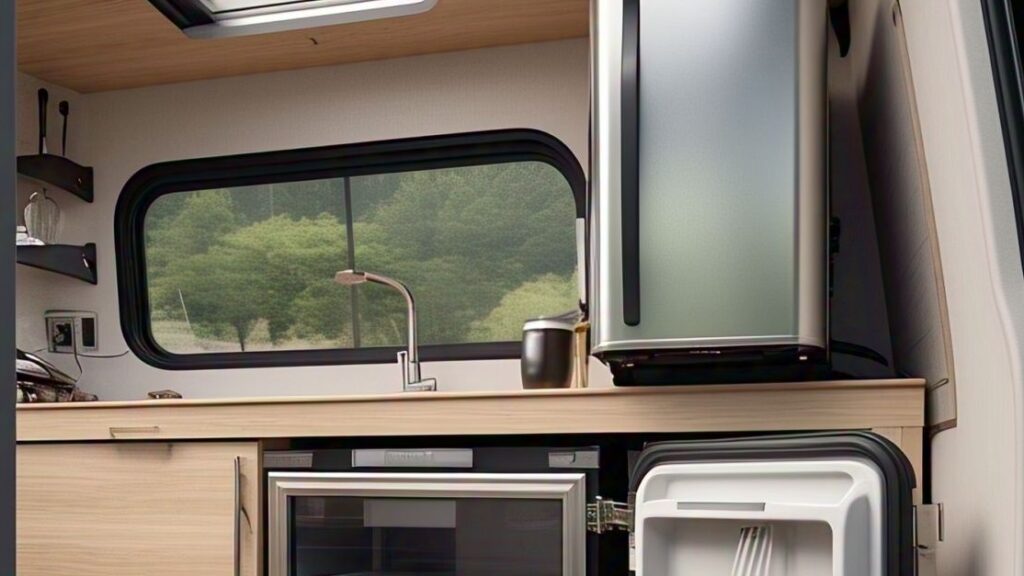
- Energy Efficiency: Operating directly from a 12V battery means there is no double conversion, which often results in higher efficiency and lower overall power consumption.
- Portability and Compactness: Designed with mobility in mind, these appliances are generally lightweight, making them ideal for use in confined spaces such as RVs, vans, and boats.
- Reliability Off-Grid: In remote locations where AC power is unavailable, 12V appliances maintain functionality, provided a sufficient battery capacity and proper charging infrastructure (solar panels, alternators, or portable generators) are in place.
- System Integration: They can be integrated into existing vehicle electrical systems with minimal modifications, allowing for a seamless setup.
2. Categories of 12 Volt Appliances for Camping
You might also want to take a look at type of 12-volt appliances, to better understand which ones you need and which ones you don’t.
Cooking & Food Preparation
These devices convert vehicle battery power into heat for cooking. They include portable ovens, microwaves, and hot plates engineered to rapidly reach and maintain specific temperatures.
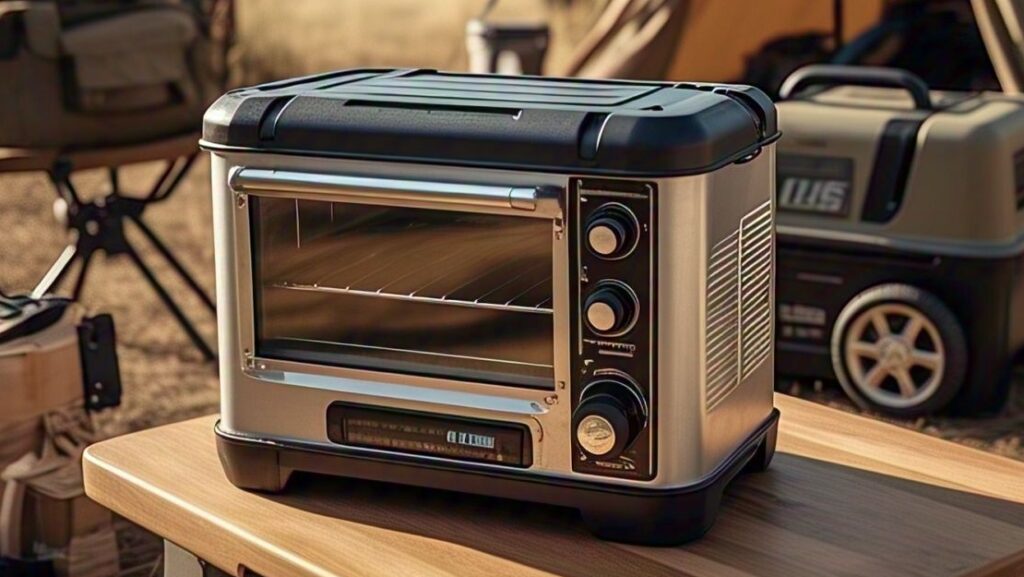
Their compact design and low power draw enable efficient food preparation without traditional AC outlets, making them essential for off-grid cooking.
Refrigeration & Cooling
Battery-powered refrigerators, coolers, and freezers are optimized to maintain precise temperature ranges.
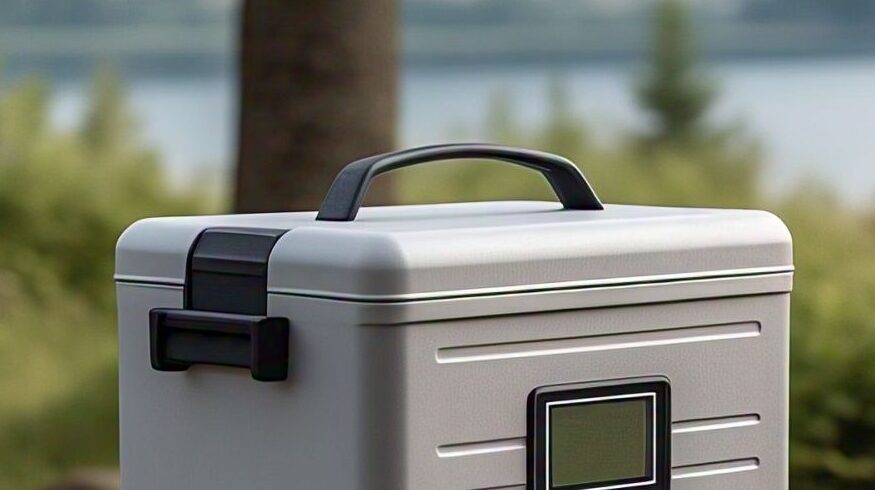
They use compressor or thermoelectric technology to preserve perishables and beverages, reducing spoilage and the need for frequent shopping.
Their energy efficiency ensures they operate for extended periods, even with limited battery capacity.
Heating & Climate Control
12 volt heaters and heated blankets provide immediate warmth in cold environments.
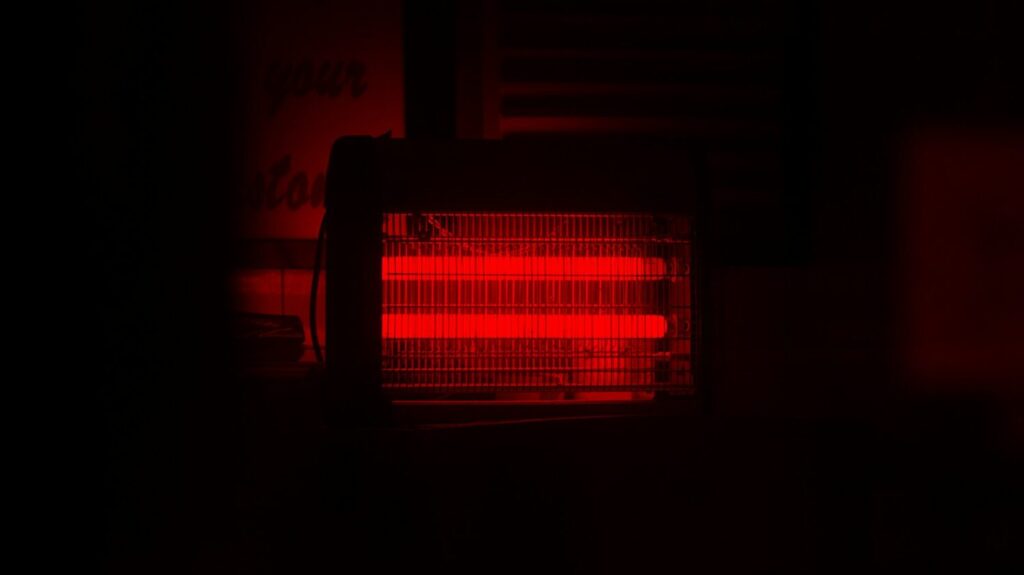
These appliances are designed with temperature regulation and safety shut-offs to prevent overheating.
Talking about heaters, you should check this article on the best electric heaters.
In contrast, 12 volt fans and evaporative coolers offer air circulation and cooling, ensuring comfort during hot weather without excessive battery drain.
Miscellaneous Accessories
This category encompasses specialized appliances such as coffee makers, electric kettles, and induction cooktops designed for off-grid use.
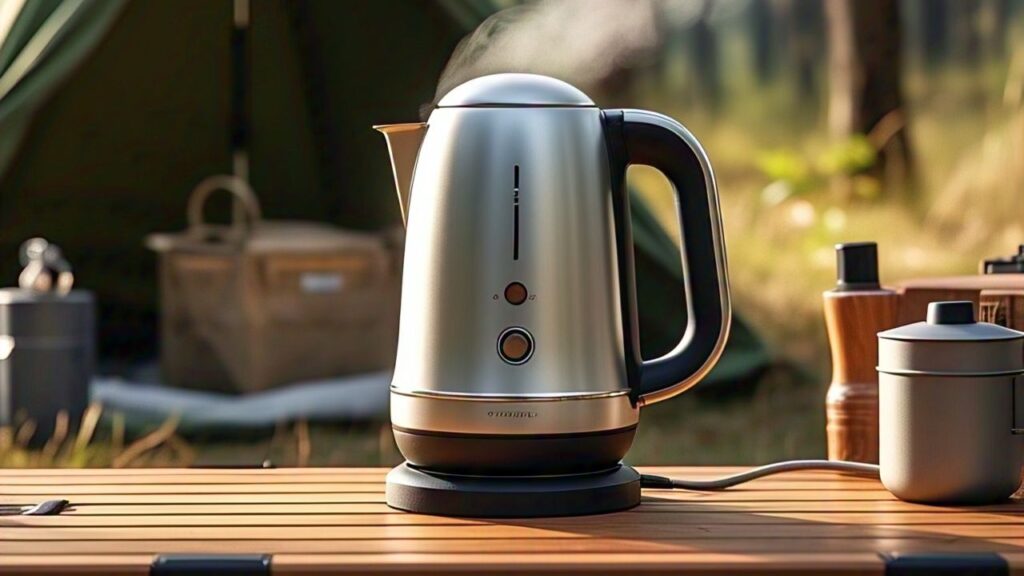
Each product is engineered for optimal energy consumption and portability, expanding the range of conveniences available to campers without compromising battery life.
3. How to Choose the Right 12 Volt Appliance
Every appliance can technically be camping appliance, and with a lot of options available, you must know your needs.
Define Your Camping Requirements

- Usage Environment: Evaluate whether you will use the appliance in an RV, van, or tent. Determine if the device will operate during short trips or extended off-grid stays.
- Functional Needs: List essential tasks—cooking, cooling, heating, cleaning, or entertainment—to ensure the appliances you buy meet your specific outdoor requirements.
Analyze Power Specifications
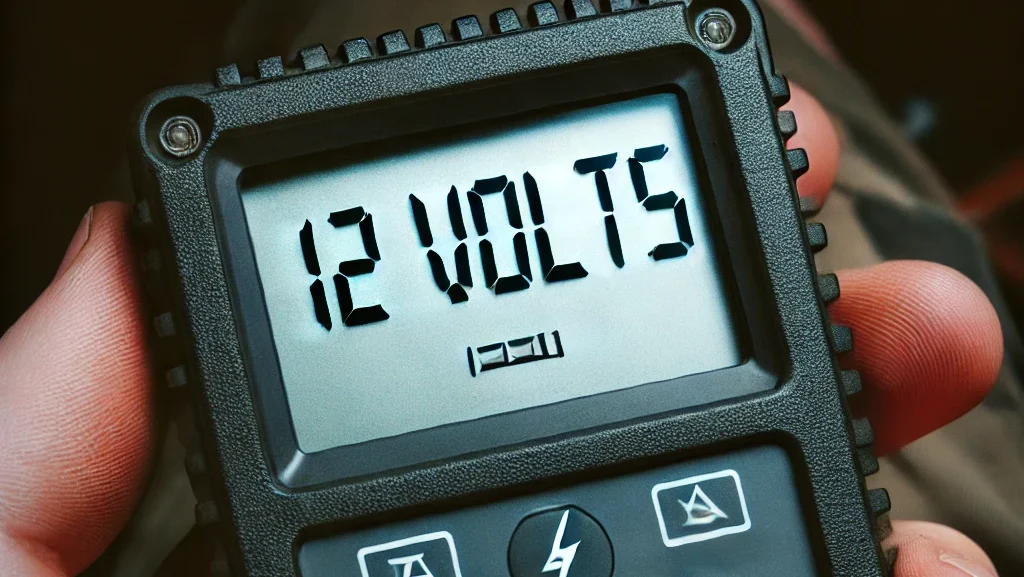
- Amperage and Wattage: Examine the appliance’s power draw (in amps or watts) to determine its energy consumption. Lower power consumption extends battery life.
- Battery Capacity Matching: Compare the appliance’s energy needs with your battery’s capacity. Calculate watt-hours required and ensure your power source (deep-cycle battery, solar, or alternator charging) can sustain the load without compromising other systems.
- Voltage Stability: Ensure the appliance is designed to operate within the voltage range provided by your power system, accounting for possible fluctuations during discharge or charging.
Evaluate Build Quality and Durability
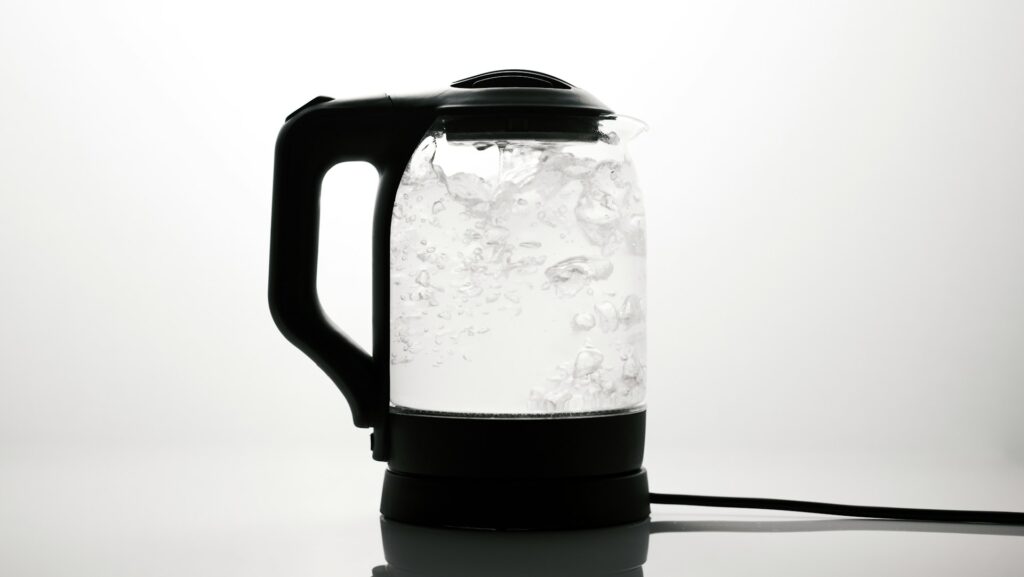
- Materials and Construction: Look for rugged, corrosion-resistant materials suited for outdoor conditions. Check for weatherproof seals and robust housing that can withstand vibrations and impacts.
- Safety Certifications: Confirm the appliance meets safety standards (e.g., UL, CE). Integrated protections—like automatic shut-off, thermal cutoffs, and overload sensors—are critical for preventing battery drain and ensuring reliable operation.
Consider System Integration
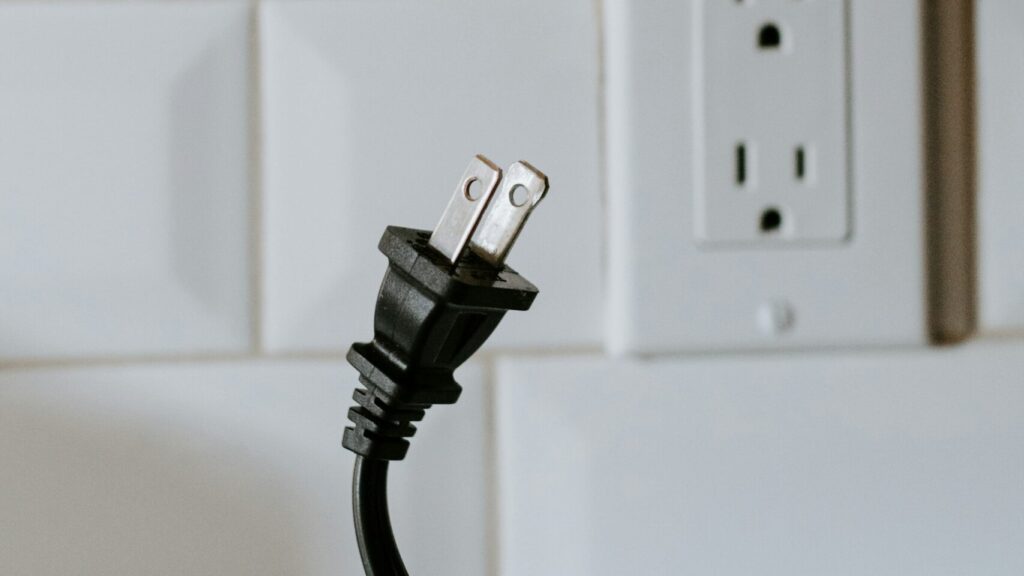
- Installation Compatibility: Choose appliances that can connect directly to your existing 12V socket or be easily hardwired. Verify that the required wiring gauge and connectors are compatible with your setup.
- Modularity: Ensure the appliance can integrate with additional power sources, such as solar panels, and work harmoniously with other devices on your DC network.
4. Installation and Usage Tips
Proper installation and usage of these appliances can minimize any reliability risks.
Proper Wiring and Connection
Wire appliances directly to the 12V power system or use a high-quality cigarette lighter adapter rated for the appliance’s current draw.
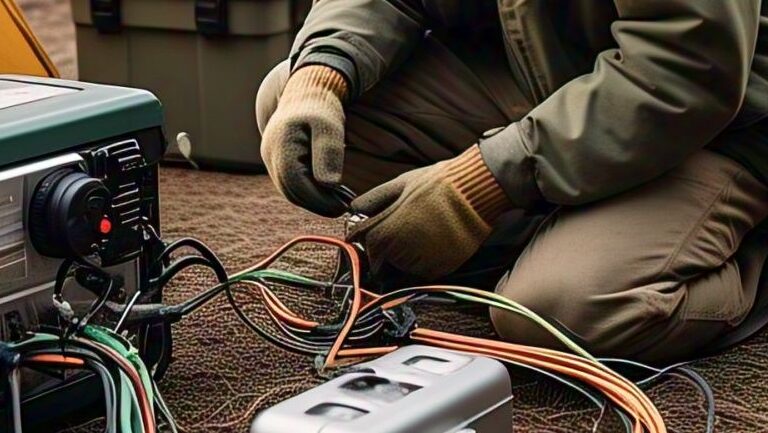
Match cable gauge to the appliance’s amperage. For higher draws, use thicker wires (e.g., 8mm²) to minimize voltage drop and prevent overheating.
Ensure all connectors are tightly fastened with proper insulation to avoid accidental disconnections and exposure to moisture.
Mounting and Placement
Install appliances where they’re easily accessible yet secure, avoiding areas prone to vibration.
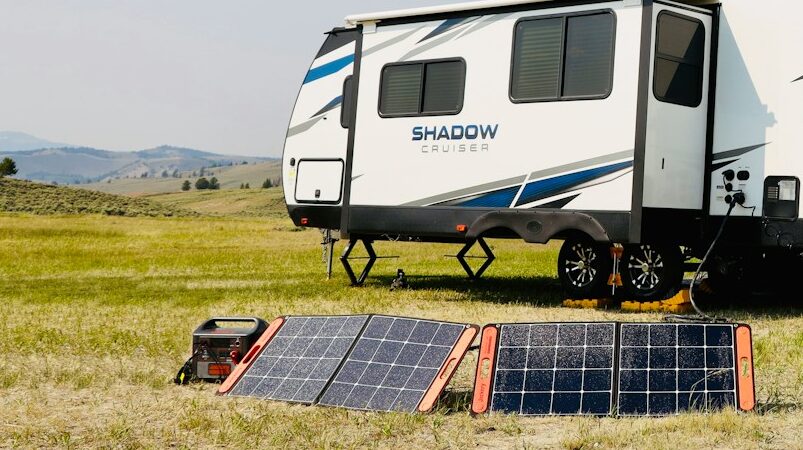
Employ brackets, clips, or mounting bases provided by the manufacturer to secure devices and reduce stress on wiring connections.
Usage Best Practices
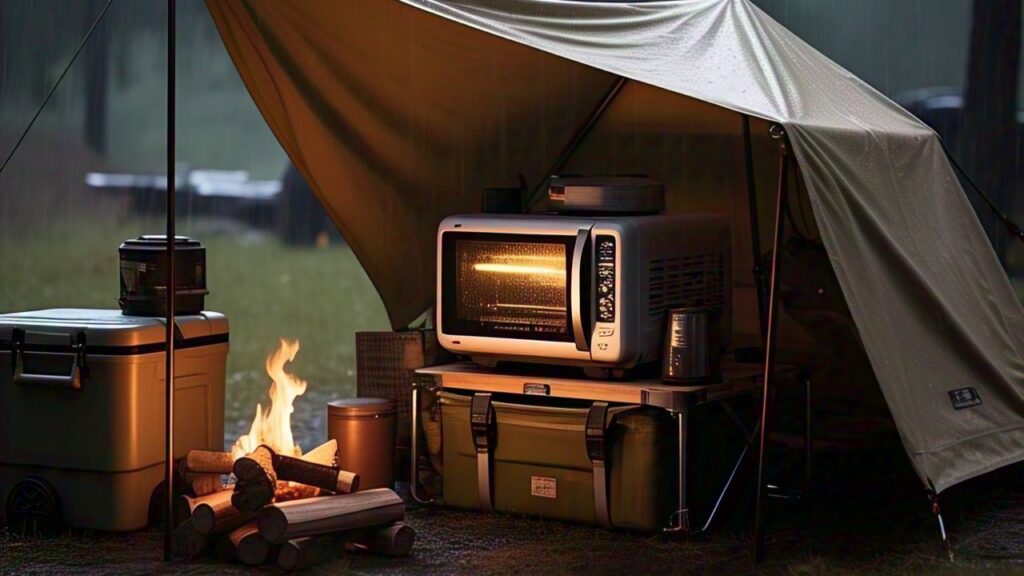
- Pre-Operation Checks: Inspect cables, connectors, and mounting hardware before each use. Confirm that voltage levels match appliance requirements.
- Regular Maintenance: Clean and inspect internal components as per manufacturer guidelines. Replace worn connectors or damaged wiring promptly to maintain safety and efficiency.
- Environmental Considerations: Protect appliances from extreme weather. Use covers or enclosures in wet conditions and ensure adequate ventilation to prevent overheating.
5. Managing Power: Batteries & Solar Options
Managing power is a big part of camping, especially if you have various appliances or you camping off-grid.
Battery Selection and Sizing
Choose deep-cycle AGM or lithium iron phosphate (LiFePO₄) batteries designed for sustained discharge.
They provide reliable energy storage, withstand repeated cycling, and deliver consistent power to 12V appliances.
Determine battery capacity in watt-hours (Wh) by multiplying voltage by amp-hour (Ah). For example, a 12V, 100Ah battery provides 1,200Wh. Here is a simple calculator to help you with that:
Battery Discrepancy Calculator
Calculate your total load by adding the wattage consumption of all appliances and estimate runtime without recharge.
Use series wiring to increase voltage and parallel wiring to increase capacity. Configure your battery bank based on the specific requirements of your appliances and charging system.
Solar Panel Integration
Choose solar panels based on daily energy needs and available sunlight hours. For instance, if you need 1,200Wh per day and receive 5 peak sun hours, select panels that cumulatively provide roughly 240W.
Solar Panel Calculator
Implement an MPPT (Maximum Power Point Tracking) charge controller to maximize energy harvest and efficiently convert variable panel output into a steady charging current.
This minimizes energy loss and protects your batteries from overcharging.
Ensure voltage ratings of solar panels, charge controllers, and batteries align with your 12V system.
Verify that wiring and connectors are rated for the expected current to prevent voltage drop and overheating.
Energy Management and Safety

- Monitoring: Use battery monitors to track state-of-charge, voltage, and current. Accurate data helps optimize energy usage and prevents deep discharges that can shorten battery life.
- Circuit Protection: Install fuses or circuit breakers on each circuit to protect wiring and appliances from overloads and short circuits.
- Regular Maintenance: Periodically check connections, clean solar panels, and monitor battery performance to maintain efficiency and extend system lifespan.
Final Thoughts
Since every product in this list is unique on it's own, there isn't a specific "winner". However, there is one product which does stand out as a must have. And it is a fridge.
Let's be honest, food is inevitable. So, given that, having a food storage box that also keeps it fresh is a must-have.
Buy If:
- You frequently camp or travel off-grid and need reliable, 12V cooling.
- You require both fridge and freezer functions for diverse food storage.
- You use battery or solar power and value energy-efficient operation.
- You have enough space in your vehicle for a mid-sized cooling unit.
Don't Buy If:
- You have very limited space or a compact vehicle for bulky appliances.
- You need ultra-precise temperature control for delicate items.
- You prefer completely silent operation with no compressor noise.
- You require independent dual-zone controls for fridge and freezer settings.
But that doesn't mean other products are not useful. Every appliance has its own unique value proposition depending upon your requirements.
Each appliance category serves a specific purpose. Cooking devices offer portable heating with minimal power draw, while refrigeration units use compressor or thermoelectric systems to reliably keep perishables fresh.
Heating and climate control solutions provide targeted warmth or cooling without overtaxing the battery.
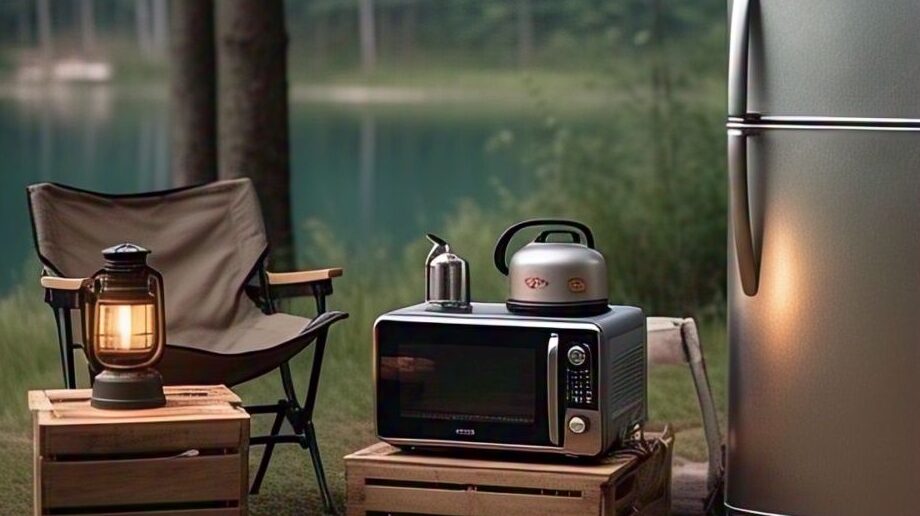
Choosing the right appliance means matching its amperage and wattage to your battery capacity, ensuring robust build quality, and confirming seamless integration with your existing 12‑volt system.
Installation is straightforward when using proper wiring, secure connectors, and thoughtful placement to prevent damage and maximize efficiency.
Don't forget to look at user reviews to deeply understand about a product's pros and cons. And with that being said, happy shopping & happy camping.
Frequently Asked Questions (FAQs)
Can you get a 12V toaster?
Yes, 12V toaster ovens are available, though traditional pop toasters aren’t typically made for 12V systems.
Can you get a 12V induction hob?
Dedicated 12V induction hobs are rare; most induction cooktops require AC power.
What cooking equipment do I need for camping?
Essential items include a portable stove or oven (gas or 12V), a compact fridge or cooler, a portable grill or hot plate, lightweight pots, pans, and basic utensils.
Is RV 12V AC or DC?
RV systems are primarily 12V DC, though many also incorporate an inverter to provide AC power when needed.
How long will a 200Ah battery run a 12V refrigerator?
Under typical conditions, a 200Ah battery can power a 12V refrigerator for about 48 to 60 hours, depending on the fridge’s efficiency and usage.





